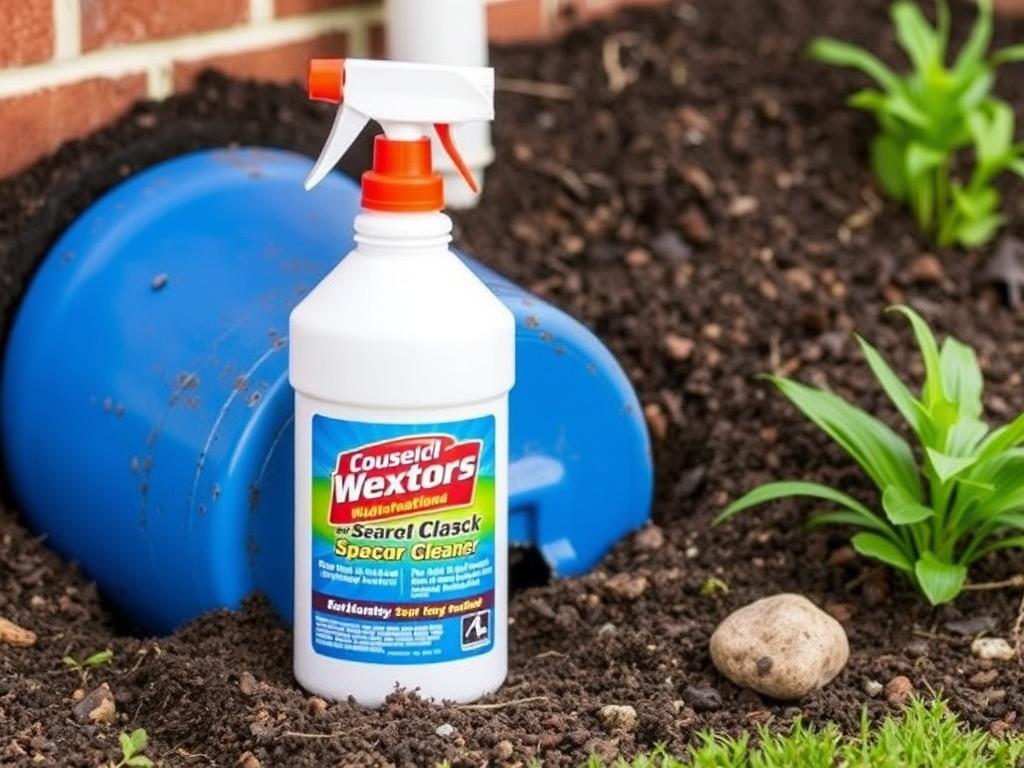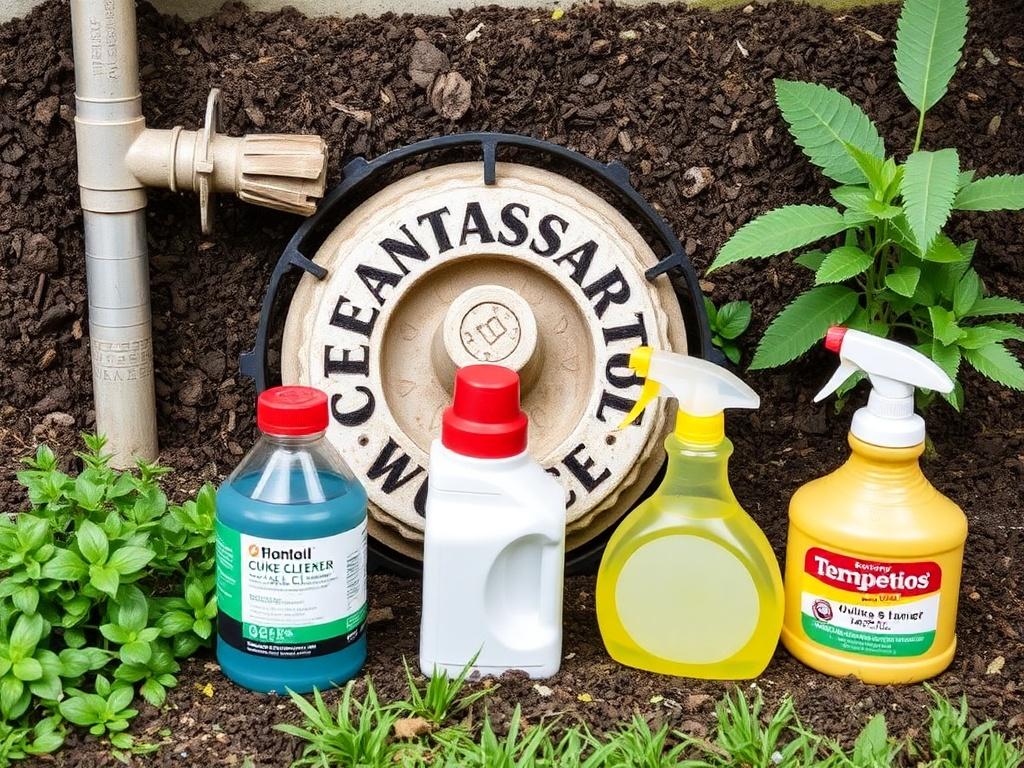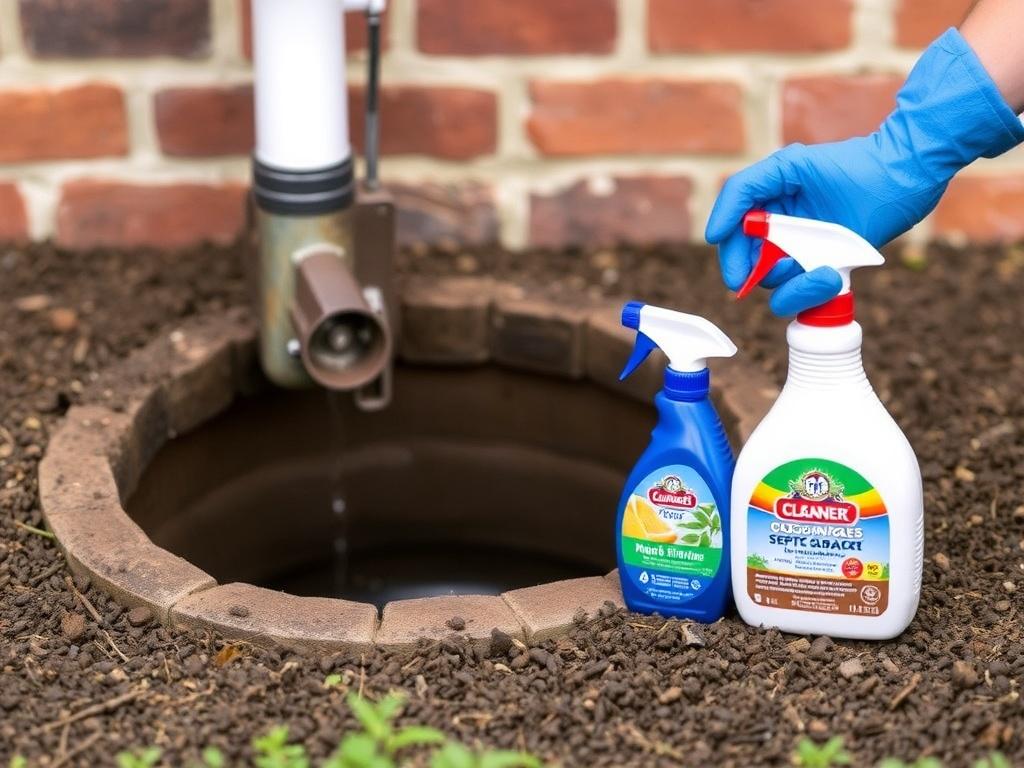When it comes to maintaining a healthy home, we often overlook the impact that our household cleaners have on the septic tank system. Septic tanks are vital for homes that aren’t connected to municipal sewage systems. They treat and dispose of wastewater on-site, making them an eco-friendly solution when properly maintained. However, many homeowners unknowingly use harmful household cleaners that can disrupt the delicate balance of bacteria inside the tank. This article explains the ins and outs of septic tanks and household cleaners, guiding you on what’s safe to use, what to avoid, and how to keep your septic system running smoothly for years to come.
- Understanding Your Septic Tank System
- How Household Cleaners Affect Septic Tanks
- Safe Household Cleaners for Septic Tanks
- Top Safe Cleaners to Use
- DIY Natural Cleaners to Consider
- Household Cleaners to Avoid
- Harsh Chemicals That Harm Septic Tanks
- Why Even “Septic Safe” Products Can Be Risky
- Best Practices for Maintaining a Healthy Septic Tank
- Tips to Keep Your Septic Tank Thriving
- Household Cleaning and Septic Tank Maintenance Routine
- Signs Your Septic Tank Might Be in Trouble
- Common Warning Signs
- Routine Septic Inspections
- Eco-Friendly Alternatives to Conventional Cleaning
- Popular Eco-Friendly Cleaner Brands
- Incorporating Green Cleaning Into Your Home
- Frequently Asked Questions About Septic Tank and Cleaners
- Can I use bleach in my septic tank if I dilute it?
- Are antibacterial soaps harmful to septic systems?
- What’s the best way to clean drains without damaging the septic system?
- How often should I pump my septic tank?
- Can septic systems handle laundry detergents?
- Summary of What’s Safe and What to Avoid
- Conclusion
Understanding Your Septic Tank System
Before diving into which household cleaners are safe for septic tanks, it’s important to understand how the system works. A septic tank is essentially an underground, watertight container that collects all the wastewater from your home’s drains and toilets. Inside, natural bacteria break down organic materials and separate solids from the liquid. This process prevents harmful substances from entering the soil system via the drain field.
The key to a functioning septic tank is the healthy balance of bacteria inside. Anything that kills or inhibits these bacteria can lead to clogs, odors, backups, and expensive repairs. Since many household cleaners contain harsh chemicals, it’s critical to know which ones can disrupt your septic system.
How Household Cleaners Affect Septic Tanks
Household cleaners are designed to remove dirt, stains, and germs, but some of their ingredients can be harmful to the beneficial bacteria in septic tanks. These bacteria are responsible for breaking down organic waste, so if they decrease, the tank’s efficiency is compromised.
Here’s what happens when you use unsafe cleaners:
- Bacteria die off: Antibacterial soaps, bleach, and ammonia kill the helpful bacteria that digest solid waste.
- Solids build up: Without bacteria to break down solids, sludge accumulates faster, necessitating more frequent pumping.
- Drain field damage: Chemicals can leach into the soil, killing microbes responsible for treating wastewater, leading to drain field failure.
- Poor wastewater treatment: This can result in polluted groundwater and potential health hazards.
Understanding this connection is crucial for making informed choices about the household cleaners you bring into your home.
Safe Household Cleaners for Septic Tanks
The good news is that not all cleaners are harmful to septic systems. Many natural and environmentally friendly products work well for household cleaning without putting your septic tank at risk. You want to look for cleaners that are biodegradable, free of harsh chemicals, and labeled septic-safe.
Top Safe Cleaners to Use
Here’s a handy table summarizing some popular safe household cleaners for septic tanks:
| Cleaner Type | Why It’s Safe | Examples |
|---|---|---|
| Biodegradable Soaps | Break down naturally without harming bacteria | Castile soap, eco-friendly dish detergents |
| Enzyme-Based Cleaners | Enhance bacterial activity, help break down waste | Enzyme drain cleaners, septic supplements |
| White Vinegar | Natural disinfectant, non-toxic to bacteria in small amounts | All-purpose cleaner, mixed with water |
| Baking Soda | Neutralizes odors, mild abrasiveness safe for septic systems | Deodorizer, gentle scrub |
| Lemon Juice | Natural cleaner and deodorizer, biodegradable | Cutting board cleaner, fresh scent |
Many conventional cleaners on the market also advertise septic-safe formulas. These typically avoid bleach, ammonia, antibacterial agents, and phosphates. It’s always wise to read product labels carefully.
DIY Natural Cleaners to Consider
For those who enjoy a hands-on approach, mixing your own septic-safe cleaners is simple and cost-effective. Here are a few easy recipes:
- All-Purpose Cleaner: Mix one part white vinegar with one part water in a spray bottle. Use this for countertops, windows, and bathroom fixtures.
- Drain Freshener: Pour half a cup of baking soda followed by half a cup of vinegar down slow drains. Let it fizz for 15 minutes, then flush with hot water.
- Scrubbing Paste: Combine baking soda with a small amount of water or lemon juice to create a mild abrasive paste for tubs and sinks.
These natural options clean effectively and are safe for your septic tank’s ecosystem.
Household Cleaners to Avoid
Knowing which products to stay away from is just as important as knowing what’s safe. Some common household cleaners can severely damage your septic system by killing beneficial bacteria or clogging components.
Harsh Chemicals That Harm Septic Tanks
Here’s a list of ingredients and types of household cleaners to avoid:
- Bleach: While widely used as a disinfectant, bleach kills bacteria in septic tanks and can lead to damage if used frequently or in large amounts.
- Ammonia: Highly toxic to bacteria, it also produces harmful fumes when mixed with bleach.
- Antibacterial Soaps and Detergents: These can reduce bacterial populations essential for waste breakdown.
- Oven and Drain Cleaners: Typically contain strong acids or lye that disrupt septic bacteria and damage pipes.
- Chemical Toilet Bowl Cleaners: Many contain chemicals that harm septic bacteria and pollute groundwater.
- Phosphate-Based Cleaners: Though less common now due to regulations, phosphates promote algae growth that can clog drain fields.
Using these products regularly or in large quantities can cause septic tanks to fail sooner than normal.
Why Even “Septic Safe” Products Can Be Risky
Some products, despite being labeled “septic safe,” may still contain chemicals that affect sensitive septic systems if overused. Septic tanks rely on a balanced environment, so moderation is key. Even chlorine bleach, if used occasionally and diluted, may not cause significant harm, but daily heavy usage should be avoided.
Best Practices for Maintaining a Healthy Septic Tank
Using safe household cleaners is only one part of septic tank care. Following best maintenance practices will prolong your system’s life and prevent costly repairs.
Tips to Keep Your Septic Tank Thriving
- Regular Pumping: Have your septic tank pumped every 3 to 5 years depending on household size and water use to remove accumulated solids.
- Conserve Water: Excessive water use floods the septic system, reducing efficiency and forcing untreated sewage into the drain field.
- Avoid Flushing Non-Degradable Items: Items like wipes, diapers, feminine products, and grease can clog your system.
- Use Septic-Safe Toiletries: Choose toilet paper and personal care products that break down easily.
- Consider Septic Additives Cautiously: While enzyme treatments may help, they are not a substitute for regular maintenance.
- Plant Wisely: Avoid deep-rooted trees or shrubs near your drain field, as roots can damage pipes.
Household Cleaning and Septic Tank Maintenance Routine
To help visualize the relationship between cleaning habits and septic maintenance, here’s a simple weekly routine:
| Day | Cleaning Task | Safe Products to Use | Tips |
|---|---|---|---|
| Monday | Kitchen counters & sink | White vinegar solution, biodegradable dish soap | Wipe spills promptly to prevent grease build-up |
| Wednesday | Bathroom surfaces | Biodegradable soap, baking soda paste | Use minimal detergent to protect septic bacteria |
| Friday | Floors & general surfaces | Natural multi-surface cleaner or vinegar mix | Mop rather than hose down, conserve water |
| Sunday | Drain maintenance | Baking soda & vinegar flush, followed by hot water | Do this monthly instead of weekly for best results |
This routine encourages consistent cleaning with septic-safe products and proper water management—two pillars of septic tank health.
Signs Your Septic Tank Might Be in Trouble

Even with safe household cleaners and good practices, septic tanks can develop issues over time. Early detection is key to limiting damage.
Common Warning Signs
- Slow Drains: Toilets, sinks, and bathtubs drain sluggishly, indicating potential blockages.
- Unpleasant Odors: Bad smells around plumbing fixtures or near the septic tank appear.
- Pooling Water: Excess water or sewage near the drain field surface suggests output failure.
- Flush Backups: Toilets or drains back up into the home.
- Lush Vegetation: The drain field shows unusually green or tall grass due to wastewater surfacing.
If you notice any of these signs, contact a septic service professional promptly for inspection and pumping.
Routine Septic Inspections
Along with regular pumping, schedule septic inspections every couple of years. Professionals check the tank’s sludge and scum levels, inspect drain fields, and advise on any repairs. Catching small problems early saves you effort and money.
Eco-Friendly Alternatives to Conventional Cleaning

In recent years, the demand for eco-friendly, septic-safe alternatives has grown. These products often use plant-based ingredients and natural enzymes that maintain a healthy septic environment while still cleaning effectively.
Popular Eco-Friendly Cleaner Brands
| Brand | Type of Cleaner | Key Features |
|---|---|---|
| Seventh Generation | Multi-surface cleaner, dish soap, laundry detergent | Biodegradable, no chlorine or synthetic fragrances |
| Biokleen | All-purpose, drain cleaners, toilet cleaner | Enzyme-based, plant-derived ingredients, septic safe |
| Eco-Me | Bathroom cleaner, laundry detergent | Citrus-based, no harsh chemicals, biodegradable |
| Dr. Bronner’s | Castile soap (multi-use) | 100% organic, biodegradable, safe for septic tanks |
Choosing these brands supports both your home’s septic health and the planet.
Incorporating Green Cleaning Into Your Home
Making the switch doesn’t have to be overwhelming. Start by replacing a few conventional cleaning products with eco-friendly alternatives. Gradually build habits around natural cleaners like vinegar, baking soda, and lemon juice. Not only will your septic tank thank you, but your indoor air quality will improve, and you’ll reduce chemical exposure for your family.
Frequently Asked Questions About Septic Tank and Cleaners

Can I use bleach in my septic tank if I dilute it?
A small amount of diluted bleach used occasionally is generally safe, but it’s best to minimize bleach use overall. Overuse harms septic bacteria and can lead to problems.
Are antibacterial soaps harmful to septic systems?
Yes, regular use of antibacterial soaps can kill beneficial bacteria in the septic tank. Opt for soap labeled as biodegradable or septic safe.
What’s the best way to clean drains without damaging the septic system?
Using enzyme-based drain cleaners or natural remedies like baking soda and vinegar rinses helps keep drains clean without harming bacteria.
How often should I pump my septic tank?
Most homeowners should pump every 3 to 5 years. Homes with larger families or high water usage may need pumping more frequently.
Can septic systems handle laundry detergents?
Yes, but choose detergents that are low-phosphate and labeled septic safe. Avoid excess detergent to prevent buildup.
Summary of What’s Safe and What to Avoid
| Safe for Septic | Harmful for Septic |
|---|---|
| Biodegradable soaps | Bleach and chlorine-based cleaners |
| Enzyme and bacterial cleaners | Ammonia |
| Natural substances (vinegar, baking soda, lemon) | Antibacterial and disinfectant soaps |
| Septic-safe laundry detergents | Oven and drain cleaners with lye or acids |
| Eco-friendly commercial cleaning products | Phosphate-containing products |
Conclusion
Keeping your septic tank healthy is not only about regular pumping and water use, but also about the cleaners you choose for your home. Household cleaners can either nurture the delicate bacterial ecosystem inside a septic tank or destroy it, leading to costly repairs and environmental damage. The key is to use biodegradable, enzyme-based, or natural cleaning products while avoiding harsh chemicals like bleach, ammonia, and antibacterial agents. Incorporating eco-friendly and homemade cleaners into your cleaning routine supports a cleaner home and a more sustainable septic system. By being mindful of what goes down your drains, you’re protecting your investment, your health, and the environment — a win for everyone involved.
Помогла вам статья?






